Not all seeds fade quietly into the background—some stand out in striking contrast, lending fruits a subtle drama worth noticing. Black seeds, with their glossy finish or deep earthy tones, often catch the eye as much as the flavor catches the tongue. Whether scattered like ink drops through soft pulp or hidden inside vibrant flesh, they bring an understated beauty to the fruits they inhabit. Some of these seeds are tiny and edible, others are bold and inedible, but each plays its part in making the fruit unique.
Here’s a non-exhaustive list to get you started on discovering fruits with black seeds—some familiar, some exotic, and all worth a closer look.
1. Papaya
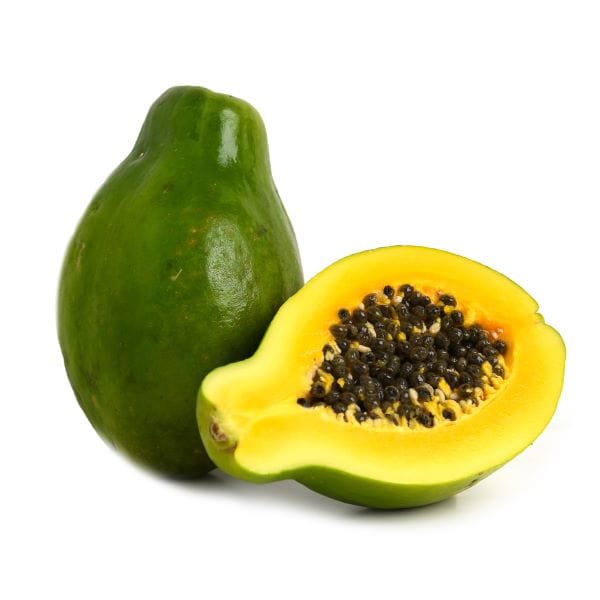
Cut open a ripe papaya and you’ll find a cluster of round, shiny black seeds nestled in the center. These seeds are slightly peppery in taste and edible in small amounts—some even use them as a natural digestive aid or substitute for black pepper.
2. Watermelon
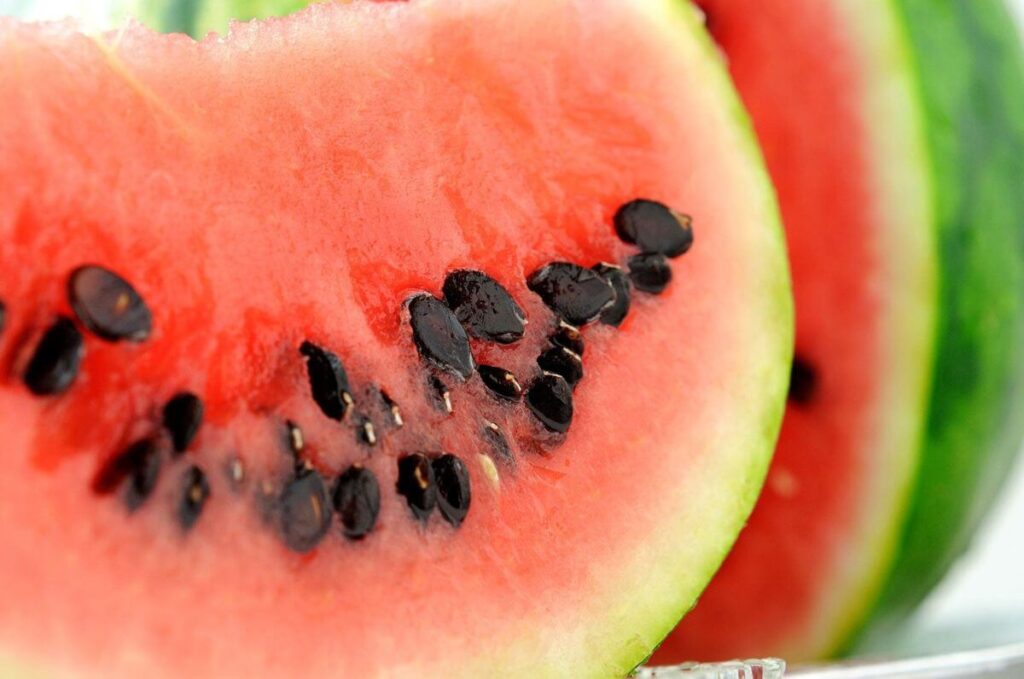
Large, glossy black seeds are scattered throughout the sweet, juicy red or yellow flesh. Though many varieties now come seedless, the traditional black-seeded watermelon is prized for its full flavor. Roasted watermelon seeds are also consumed in some cultures as a crunchy snack.
3. Custard Apple (Cherimoya / Sweetsop)
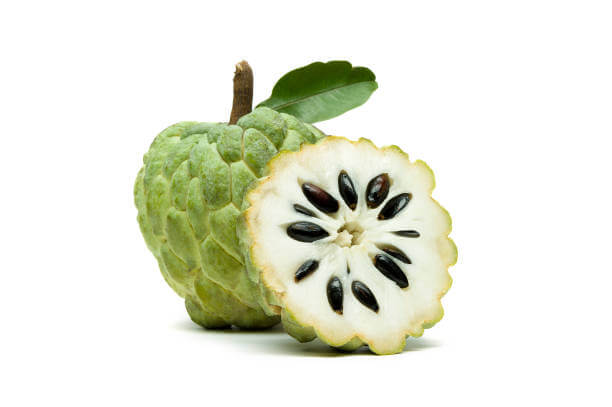
This creamy fruit is dotted with large, smooth, black seeds that are not edible. The seeds must be removed before eating, but the rich, custard-like flesh makes the extra effort worthwhile. The seeds are sometimes used in traditional medicine, though they are toxic if consumed in large quantities.
4. Passion Fruit
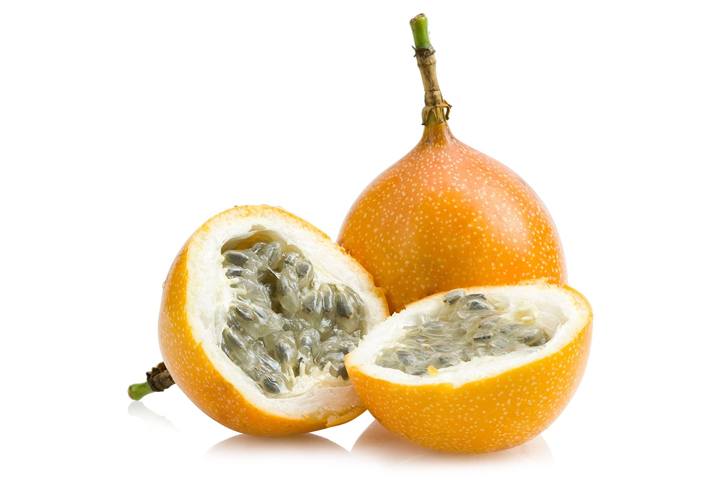
Each spoonful of passion fruit pulp is filled with juicy, aromatic sacs, each surrounding a small black seed. The seeds are edible and provide a nice crunch, balancing the intense tartness of the pulp.
5. Kiwi
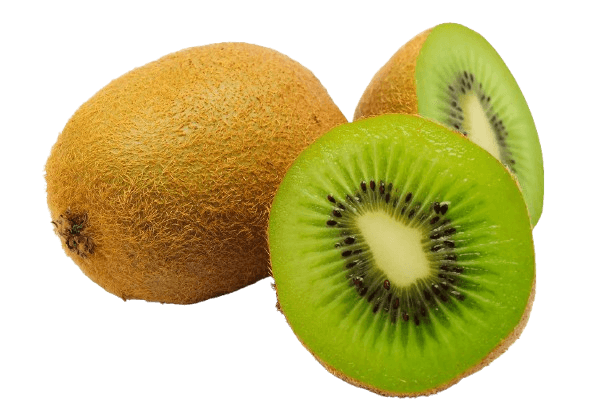
The bright green (or golden) flesh of a kiwi is studded with small black seeds that add a crunchy texture. These seeds are completely edible and rich in omega-3 fatty acids, fiber, and antioxidants.
6. Dragon Fruit (Pitaya)
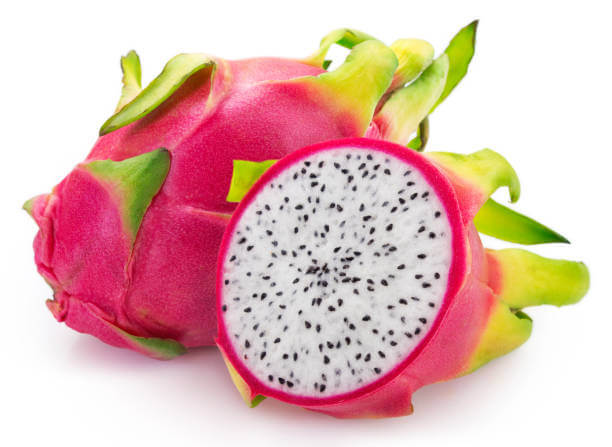
Dragon fruit, especially the red and white-fleshed varieties, contains numerous tiny black seeds that are evenly distributed throughout the pulp. The seeds are crunchy, edible, and add contrast to the soft texture of the fruit. They also provide a mild nutty flavor.
7. Sapodilla (Chikoo)
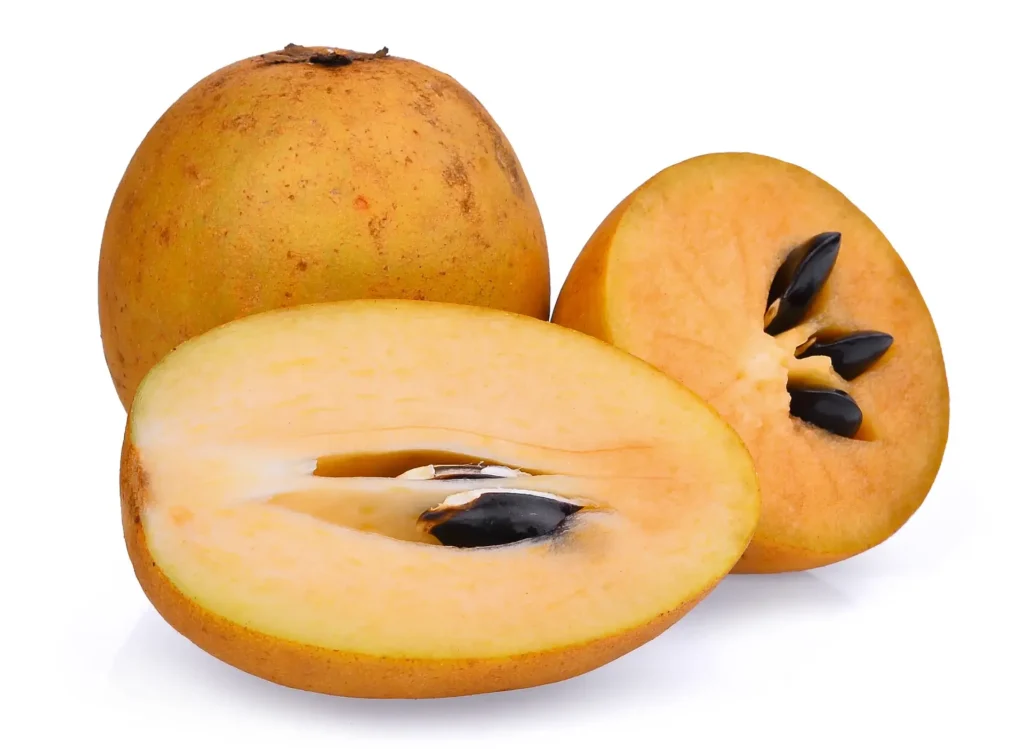
This sweet, brown-skinned tropical fruit contains a few large, shiny black seeds with a hook-like structure. The seeds are inedible and must be removed, but the fruit’s caramel-like flavor makes it a treat.
8. Akebia (Chocolate Vine)
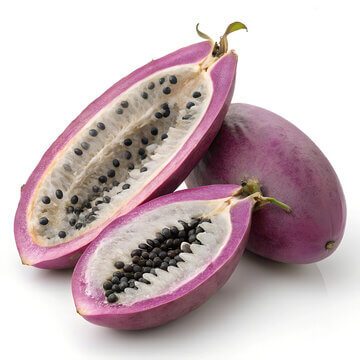
Akebia fruits split open to reveal a jelly-like pulp filled with small, glossy black seeds. The contrast between the lavender outer shell and the black seeds is striking. While the pulp is sweet and edible, the seeds are typically discarded.
9. American Pawpaw
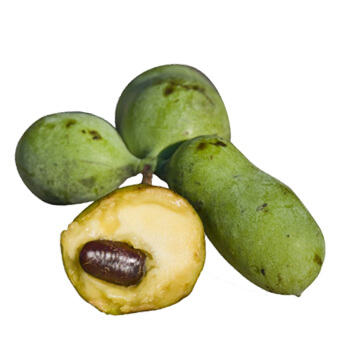
This tropical-flavored native fruit hides large, smooth black seeds within its soft yellow flesh. Each fruit contains several seeds, which are embedded like stones in custard. Though delicious, the seeds are not edible.
10. Tamarillo (Tree Tomato)
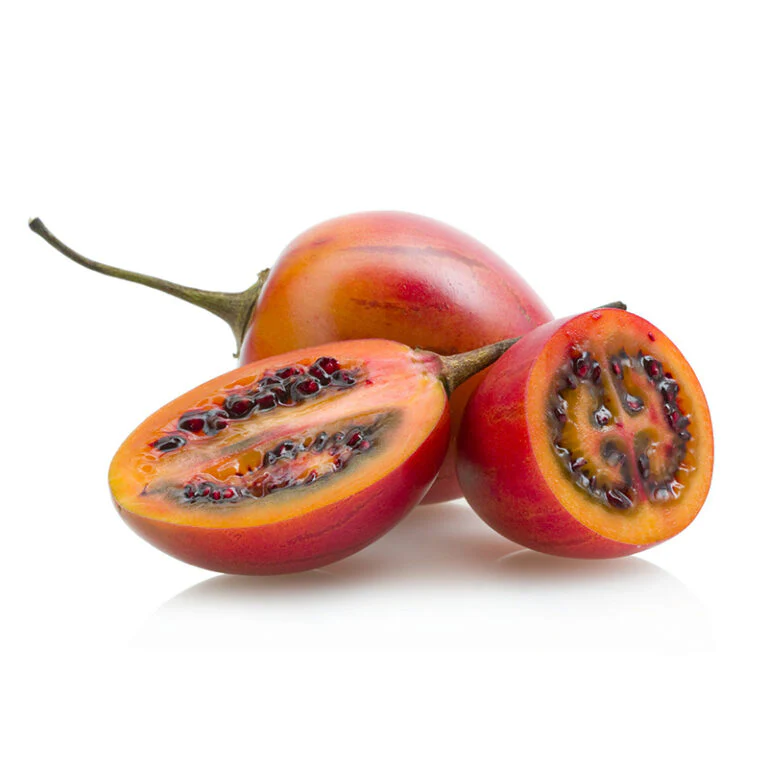
Inside its vibrant red or orange skin, the tamarillo holds soft, juicy pulp dotted with numerous edible black seeds. The seeds offer a slightly crunchy texture and add contrast to the sweet-tart taste.
11. Abiu
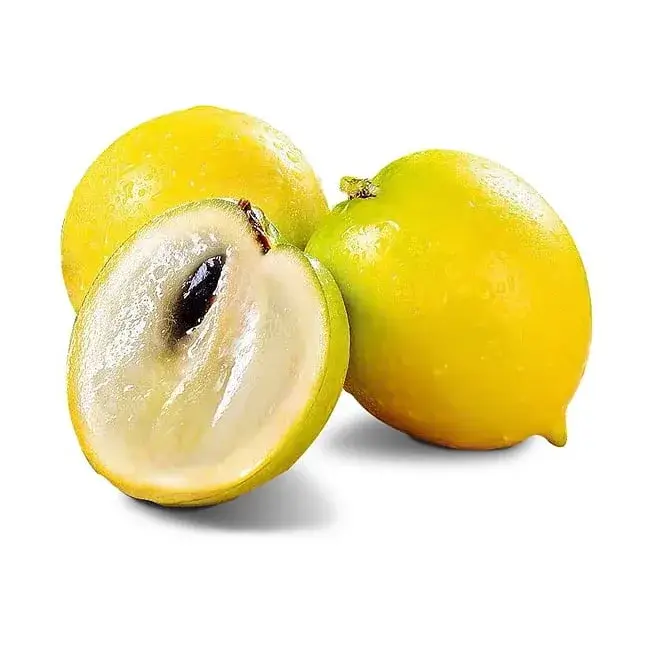
Abiu fruit has a translucent yellow pulp with several black seeds tucked inside. The seeds are large and shiny, nestled in a jelly-like flesh often compared to caramel or vanilla custard.
12. Ackee
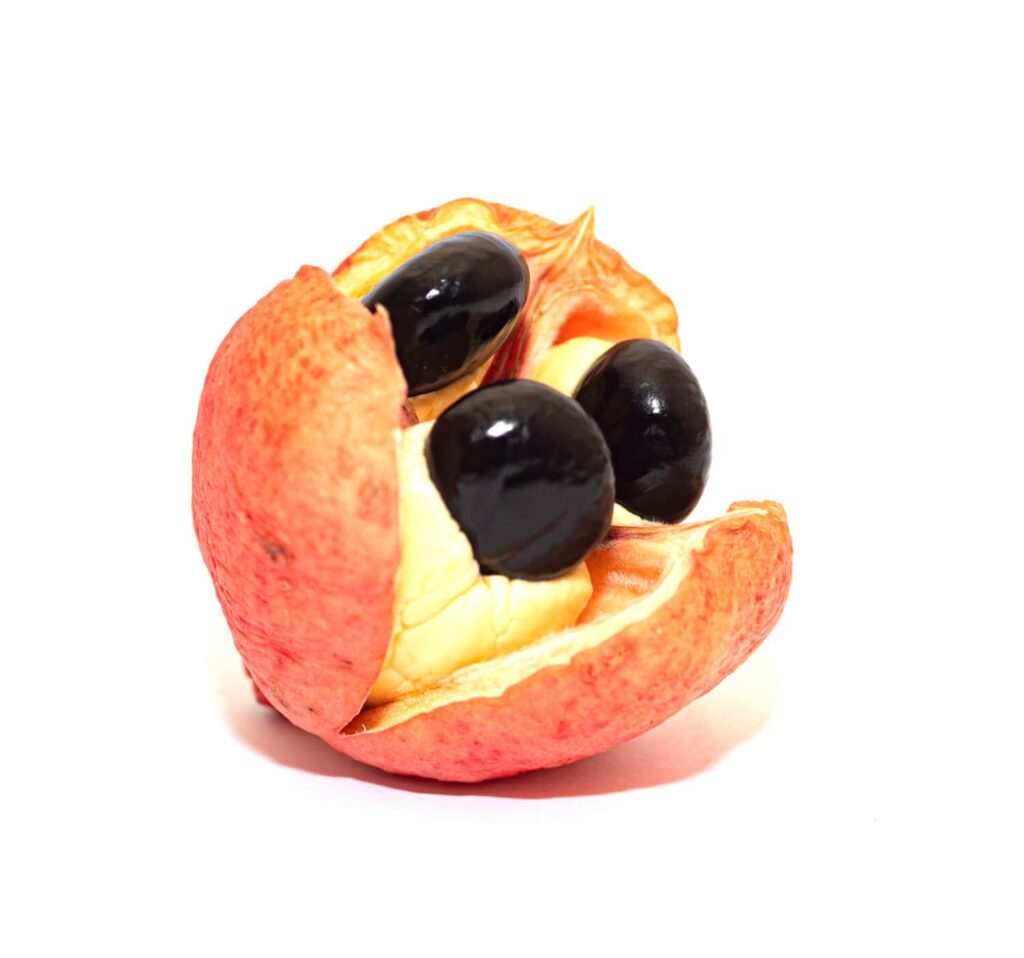
Ackee, Jamaica’s national fruit, has three large, glossy black seeds exposed when the bright red fruit naturally opens. Important note: only the yellow arils are edible, and the seeds (and unripened parts) are highly toxic.
13. Soursop (Graviola)
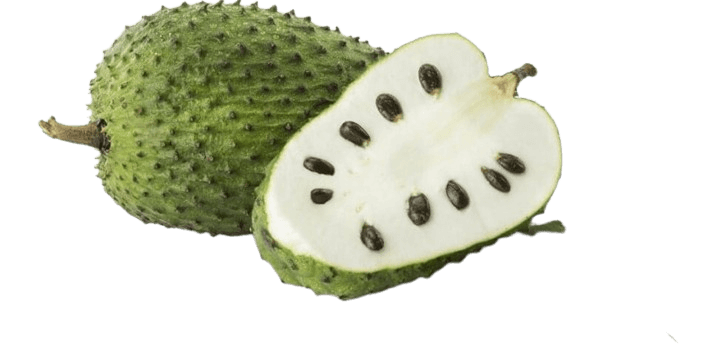
Soursop has soft white pulp filled with numerous large, hard black seeds. The seeds are inedible and must be removed, but they stand out against the creamy flesh, which has a mix of strawberry and citrus flavor.
14. Dead Man’s Fingers (Decaisnea)
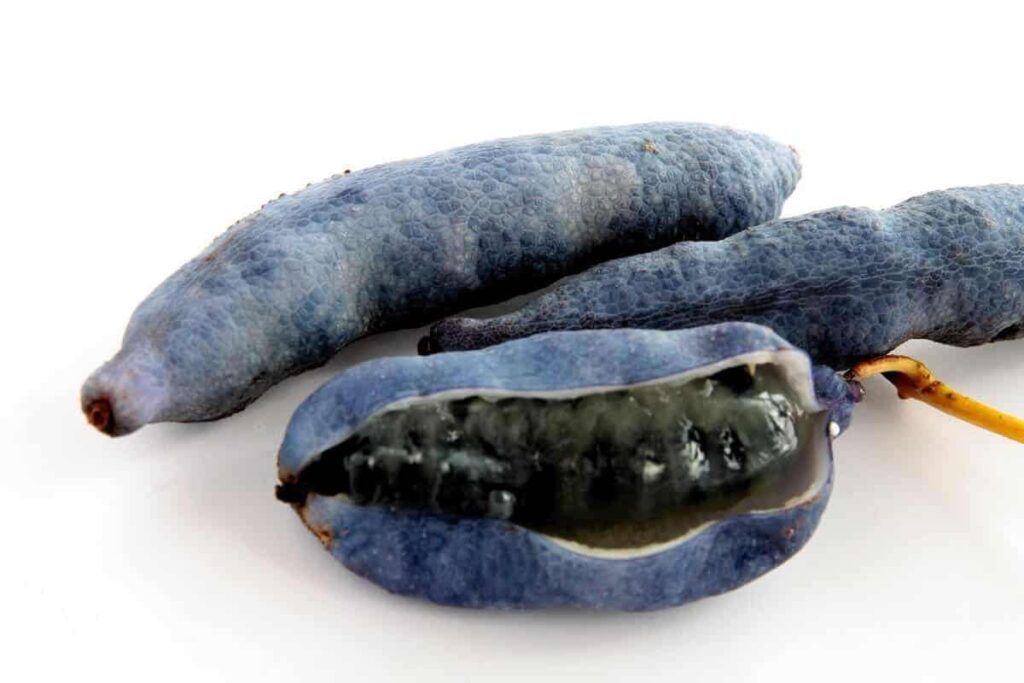
This peculiar fruit, resembling blue bananas, has a jelly-like interior loaded with shiny black seeds. While the texture may seem eerie, the pulp is mildly sweet and the seeds are typically not eaten.
15. Jatropha Fruit
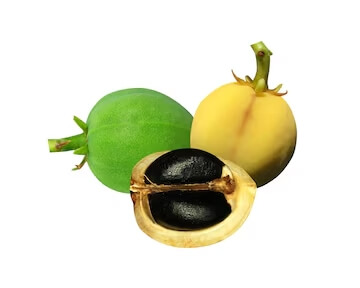
Jatropha produces small capsule-like fruits that split open to reveal dark black seeds. While visually appealing, these seeds are highly toxic and used mainly for non-food purposes like biofuel production.
16. Lucuma
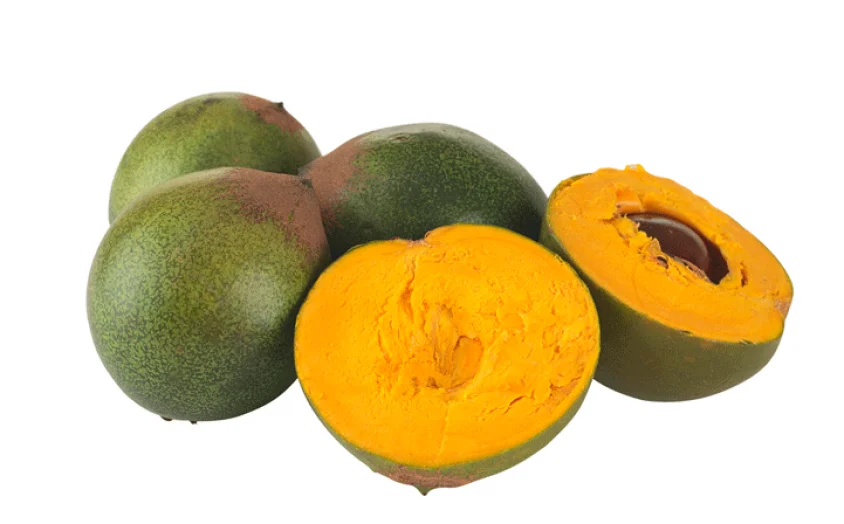
Lucuma has a dry, sweet flesh often used in desserts, and each fruit usually contains 1–2 large, smooth, black seeds. The seeds are round and shiny—visually reminiscent of polished stones.
17. Mamey Sapote
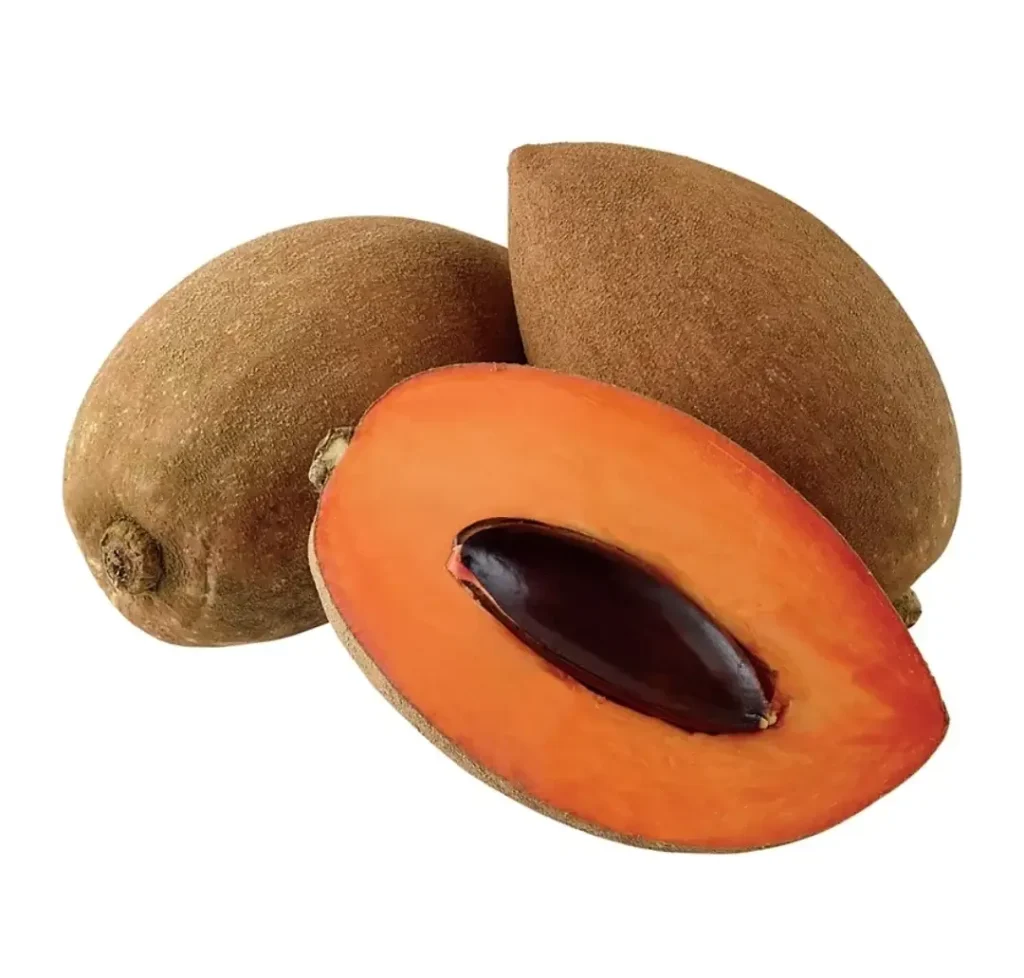
This fruit has soft, vibrant orange flesh and usually one to four large black seeds at the center. The contrast between the seed and flesh makes for a bold visual. The seeds are not edible but have been used traditionally in folk medicine.
18. Miracle Berry (Synsepalum dulcificum)
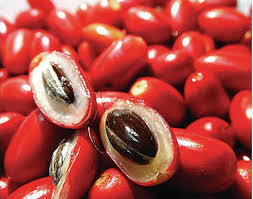
The miracle berry has one single black seed inside its small red fruit. While the berry itself is mildly sweet, its real magic lies in a protein called miraculin, which temporarily makes sour foods taste sweet.
19. Velvet Tamarind
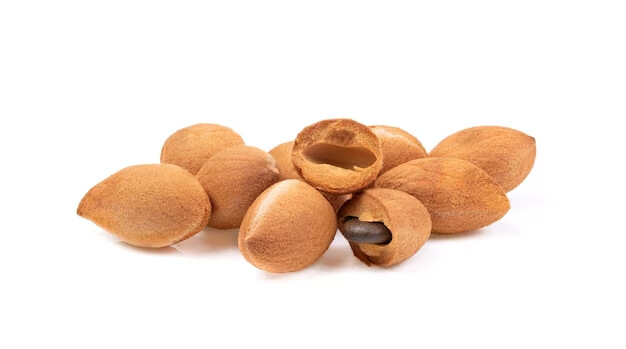
Tamarind pods hold sticky, sweet-sour pulp wrapped around hard, glossy black seeds. The seeds are inedible raw but are sometimes roasted or used in traditional remedies and crafts.
20. Medlar
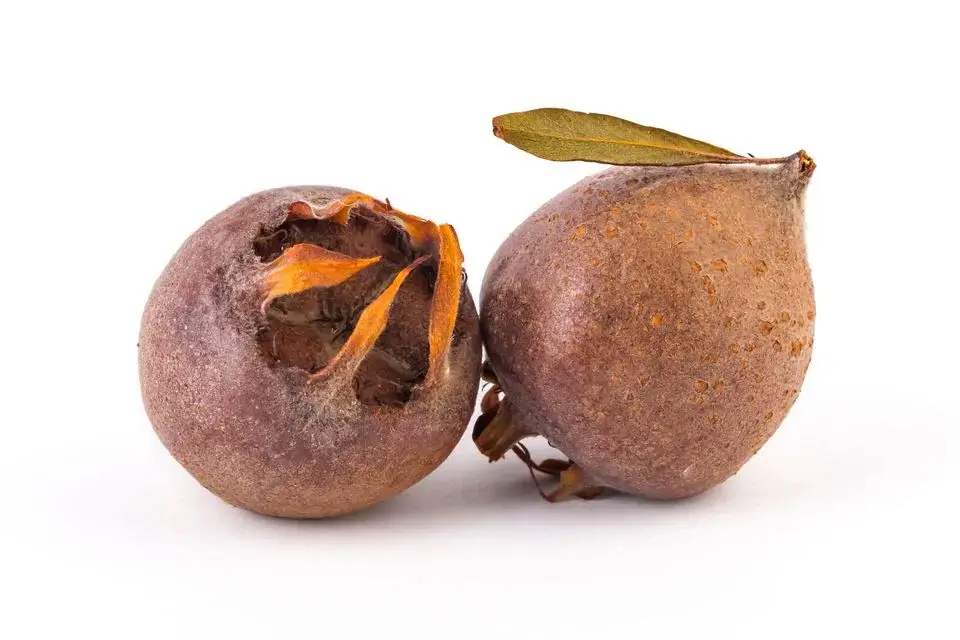
Medlar fruits ripen after harvesting (“bletting”) and contain small black seeds embedded within the soft, sweet flesh. The seeds are not typically eaten but help in propagation.
21. Nutmeg
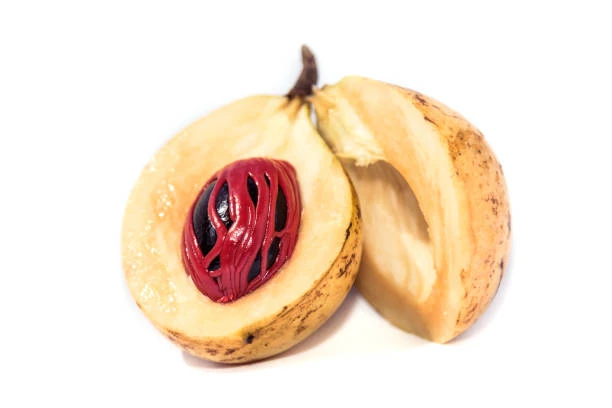
Nutmeg is actually the seed of the fruit of the nutmeg tree. When the fruit splits, it reveals a brown-black seed encased in a red lacy covering called mace. The seed, once dried and ground, becomes the spice known as nutmeg.
22. Thorn Apple (Datura)
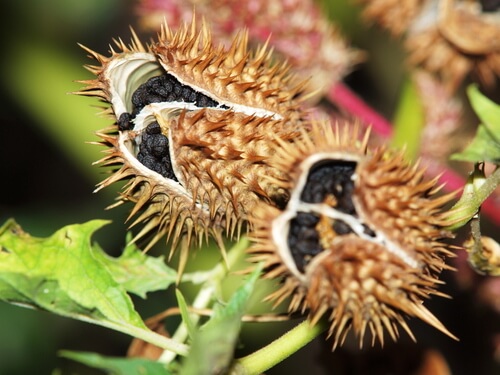
Thorn apple fruits are spiky capsules that split open to release numerous small, dark black seeds. These seeds are highly toxic and have hallucinogenic properties—never for consumption.
Fruits with black seeds offer a fascinating glimpse into nature’s variety—from the well-known to the wonderfully exotic. While this list is far from exhaustive, it highlights just a few of the many fruits where black seeds add contrast, flavor, or intrigue. There’s always more to discover in the colorful world of fruit!
